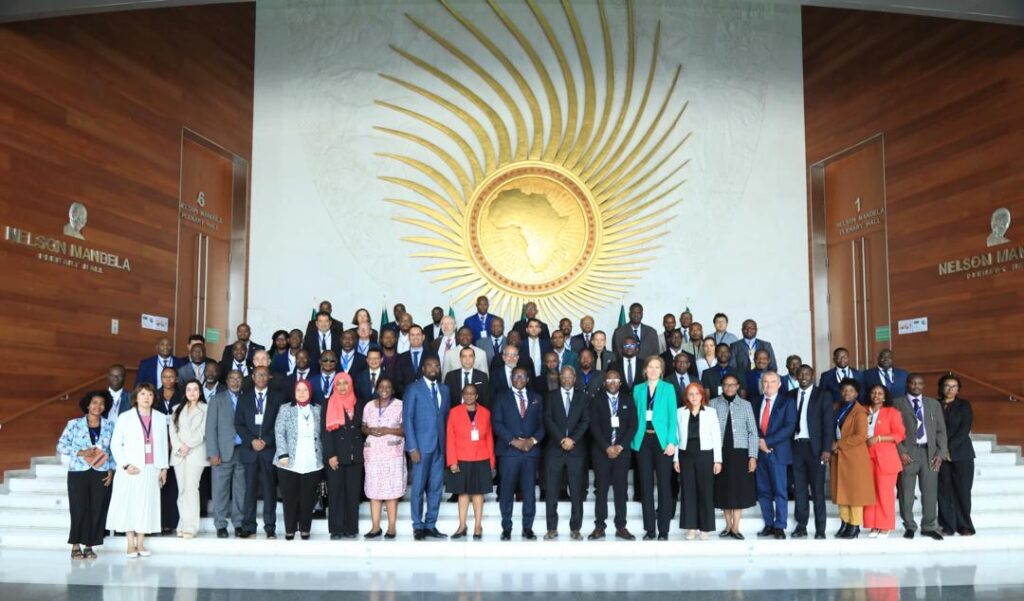By Mohammed Dahiru Lawal
A newly launched African Single Electricity Market (AfSEM) High-Level Oversight Committee at the African Union Headquarters in Addis Ababa is set to lay the foundation for the world’s largest electricity market.
The historic moment unfolded on June 30, 2025, at the African Union Headquarters in Addis Ababa, Ethiopia.
This committee, now the technical nerve centre for the AfSEM, is tasked with turning the lofty goals of Agenda 2063 into operational reality, marking a turning point in the pursuit of energy integration across Africa.
In a continent where over 600 million people remain off the grid and electricity disparity ranges from under 19% in some countries to over 90% in others, the African Union’s ambition to unite the continent under a single electricity market might seem audacious — until now.
Tasked with transforming the AfSEM from policy to reality, this committee will oversee technical
implementation, monitor progress, and harmonise the market’s regulatory and investment frameworks. Its mandate is to turn a fragmented energy landscape into a unified, competitive and climate-aligned power ecosystem.
With the official opening comprising a diverse range of organs — from AUDA-NEPAD and AfDB to RECs, power pools, and regulators — the committee is the brain trust behind the rollout of the AfSEM and its backbone, the Continental Power System Master Plan (CMP). The CMP aims to integrate Africa’s five regional power pools and mobilise investment into transmission infrastructure to foster cross-border electricity trade.
“This committee is not about bureaucratic scaffolding,” said Dr. Kamugisha Kazaura, AUC’s Director of Infrastructure and Energy. “It is the governance engine that will drive Africa’s energy transformation.”
Electricity As One Language
Imagine a scenario where energy surpluses in the DRC can light homes in Chad, or where solar megawatts generated in North Africa feed green industries in West Africa. This is a vision beyond fantasy, but whose blueprint is already in the making.
According to the AU concept note, the committee’s duties include developing de-risking strategies to attract private capital, synchronising regulatory instruments like transmission tariffs, and aligning with broader AU frameworks such as the AfCFTA and the African Carbon Market Initiative.
Wale Shonibare, Director at the African Development Bank, emphasised the stakes, stating, “Over 1 billion Africans still lack access to clean cooking, and energy poverty costs the continent 2-4% of GDP annually,” he said in his opening remarks. “The AfSEM Oversight Committee gives us the coordination muscle we need to overcome this hidden tax.”
Unlike many continental bodies that exist only in theory, the Oversight Committee will drive the activation of AfSEM’s technical working groups, define project readiness protocols, and oversee national and regional guideline adoption. While partners such as the European Union, GIZ, BMZ, and AfDB are supporting capacity building, knowledge platforms, and blended finance mechanisms.
The EU’s CEPA support programme, for instance, has already enabled the development of procurement frameworks, RE trading strategies, and off-grid policy harmonisation templates that will now be implemented under the committee’s watch.
What Lies Ahead
The path is not without obstacles. Regional disparities in infrastructure, legal frameworks, and Utility viability remain acute. Less than 25% of African utilities recover operational costs, a major impediment to sustainable investment.
But the continent has already begun to stitch its grids. The 400kV Kenya–Tanzania interconnection line now links East Africa’s grids, and by 2027, the East African Power Pool (EAPP) will interconnect with the Southern African Power Pool (SAPP), forming a mega regional
bloc.
As Tichakunda Simbini of AUDA-NEPAD noted, “AfSEM and CMP are no longer dreams — they are blueprints becoming reality.”
“Linking the grids of Kenya and Tanzania, and synchronising them with those of Uganda, Rwanda, Burundi, and the Democratic Republic of Congo — is for example a major step forward,” Simbini emphasised, expressing hope that, “With the progress we are making, we know that AfSEM and the Continental Power Master Plan are aspirations we will see realised in our lifetime.”
If the Oversight Committee holds firm and delivers on its promise, the age of a truly Africanpower grid – the world’s biggest – may be just around the corner.

